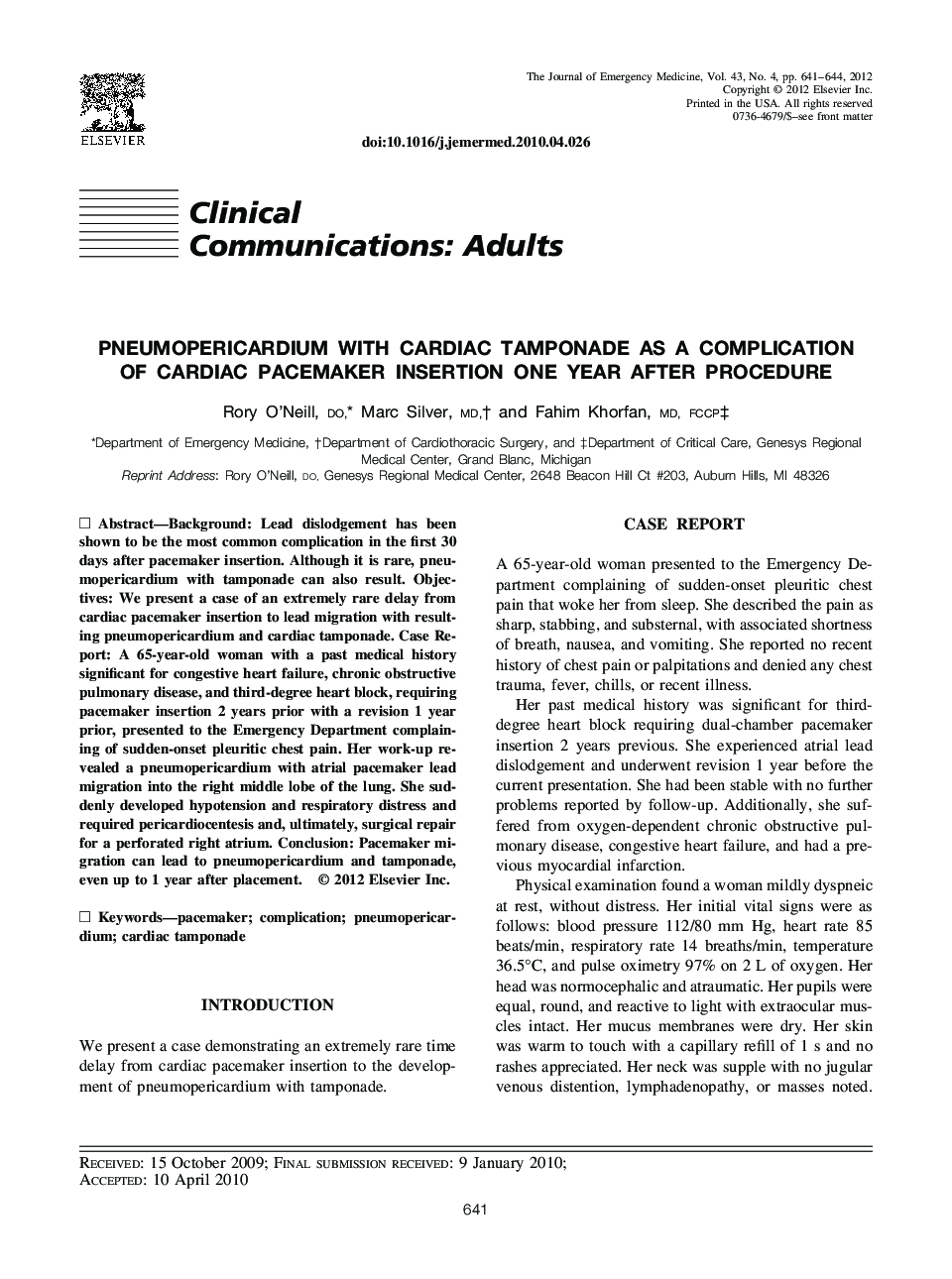| Article ID | Journal | Published Year | Pages | File Type |
|---|---|---|---|---|
| 3248983 | The Journal of Emergency Medicine | 2012 | 4 Pages |
Background: Lead dislodgement has been shown to be the most common complication in the first 30 days after pacemaker insertion. Although it is rare, pneumopericardium with tamponade can also result. Objectives: We present a case of an extremely rare delay from cardiac pacemaker insertion to lead migration with resulting pneumopericardium and cardiac tamponade. Case Report: A 65-year-old woman with a past medical history significant for congestive heart failure, chronic obstructive pulmonary disease, and third-degree heart block, requiring pacemaker insertion 2 years prior with a revision 1 year prior, presented to the Emergency Department complaining of sudden-onset pleuritic chest pain. Her work-up revealed a pneumopericardium with atrial pacemaker lead migration into the right middle lobe of the lung. She suddenly developed hypotension and respiratory distress and required pericardiocentesis and, ultimately, surgical repair for a perforated right atrium. Conclusion: Pacemaker migration can lead to pneumopericardium and tamponade, even up to 1 year after placement.
